Name Stephen Austin Mascot Lumberjack, Ladyjack Colors White, Purple | Enrollment 11,623 (2014) Acceptance rate 55.6% (2014) | |
 | ||
Notable alumni Larry Centers, Don Henley, Mark Moseley, Terrance Shaw, Jeremiah Trotter Similar Sam Houston State Uni, Lamar University, Texas A&M University, University of Houston, University of Texas at Tyler | ||
Stephen f austin state university campus tour
Stephen Fuller Austin (November 3, 1793 – December 27, 1836) was an American empresario. Known as the "Father of Texas", and the founder of Texas, he led the second, and ultimately, the successful colonization of the region by bringing 300 families from the United States to the region in 1825.
Contents
- Stephen f austin state university campus tour
- SFA Spot Students C 2006
- Early years
- Moving to Texas
- Empresario Austin
- Slavery
- Relations with Mexico
- Texas Revolution
- Austin in the Republic of Texas
- Death and estate
- Monuments
- Past family
- References
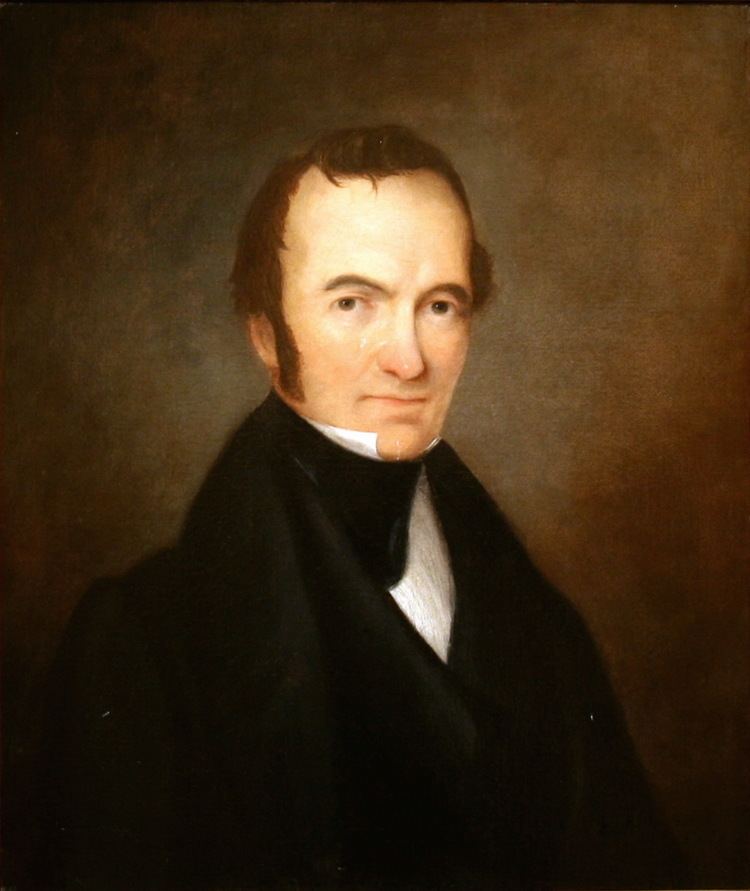
Born in Virginia and raised in southeastern Missouri, Austin served in the Missouri territorial legislature before moving to Arkansas Territory and later Louisiana. His father, Moses Austin, received an empresario grant from Spain to settle Texas. After Moses Austin's death in 1821, Stephen Austin won recognition of the empresario grant from the newly-independent state of Mexico. Austin convinced numerous American settlers to move to Texas, and by 1825 Austin had brought the first 300 American families into the territory. Throughout the 1820s, Austin sought to maintain good relations with the Mexican government, and he helped suppress the Fredonian Rebellion. He also helped ensure the introduction of slavery into Texas despite the attempts of the Mexican government to ban the institution.
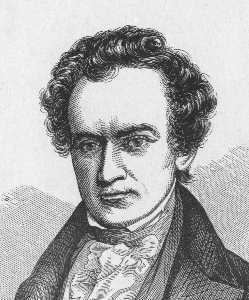
As Texas settlers became increasingly dissatisfied with the Mexican government, Austin advocated conciliation with the Mexican government, but the dissent against Mexico escalated into the Texas Revolution. Austin led Texas forces at the successful Siege of Béxar before serving as a commissioner to the United States. Austin ran in the 1836 Texas presidential election but was defeated by Sam Houston. Houston appointed Austin as secretary of state for the new republic, and Austin held that position until his death in December 1836.
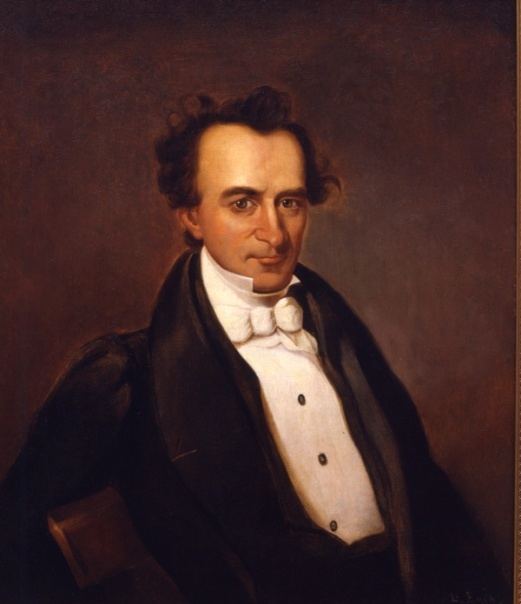
Numerous places and institutions are named in his honor, including the capital of Texas, Austin in Travis County, Austin County, Austin Bayou, Stephen F. Austin State University in Nacogdoches, Austin College in Sherman, and a number of K-12 schools.
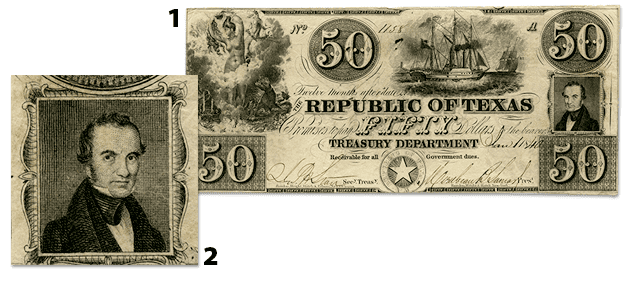
SFA Spot Students C (2006)
Early years
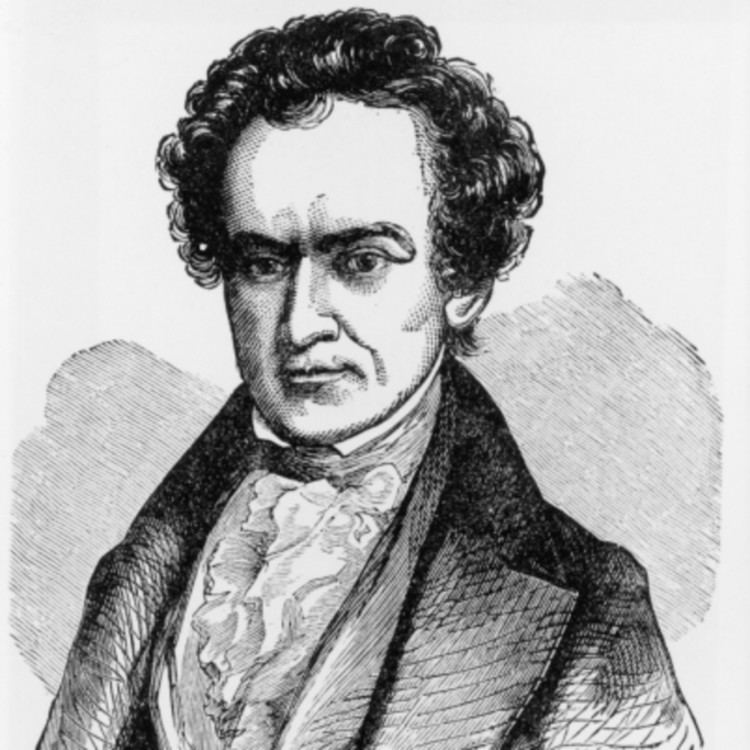
Stephen F. Austin was born in the mining region of southwestern Virginia (Wythe County) in what is known as Austinville today, some 256 miles (412 km) southwest of Richmond, Virginia. He was the second child of Mary Brown Austin and Moses Austin; the first, Eliza, lived only one month. On June 8, 1798, when Stephen was four years old, his family moved west to the lead-mining region of present-day Potosi, Missouri, 40 miles west of the Mississippi River. His father Moses Austin received a sitio from the Spanish government for the mining site of Mine à Breton, established by French colonists. His great-great-grandfather, Anthony Austin (b.1636), was the son of Richard Austin (b.1598 in Bishopstoke, Hampshire, England), he and his wife Esther were original settlers of Suffield, Massachusetts, which became Connecticut in 1749.
When Austin was eleven years old, his family sent him back east to be educated, first at the preparatory school of Bacon Academy in Colchester, Connecticut, and then at Transylvania University in Lexington, Kentucky, from which he was graduated in 1810. After graduation, Austin began studying to be a lawyer. At age 21, he served in the legislature of the Missouri Territory. As a member of the territorial legislature, he was "influential in obtaining a charter for the struggling Bank of St. Louis."
Left penniless after the Panic of 1819, Austin decided to move south to the new Arkansas Territory. He acquired property on the south bank of the Arkansas River, in the area that would later become Little Rock. After purchasing the property, he learned the area was being considered as the location for the new territorial capital, which could make his land worth a great deal more. He made his home in Hempstead County, Arkansas. Two weeks before the first Arkansas territorial elections in 1820, Austin declared his candidacy for Congress. His late entrance meant his name did not appear on the ballot in two of the five counties, but he still placed second in the field of six candidates. Later, he was appointed as a judge for the First Circuit Court. Over the next few months, Little Rock did become the territorial capital, but Austin's claim to land in the area was contested, and the courts ruled against him. The Territorial Assembly reorganized the government and abolished Austin's judgeship.
Austin left the territory, moving to Louisiana. He reached New Orleans in November 1820, where he met and stayed with a New Orleans lawyer and former Kentucky congressman, Joseph H. Hawkins, and made arrangements to study law.
Moving to Texas
During Austin's time in Arkansas, his father traveled to Spanish Texas and received an empresarial grant that would allow him to bring 300 American families to Texas, they would be called "The Old 300." Moses Austin caught pneumonia soon after returning to Missouri. He directed that his empresario grant would be taken over by his son Stephen.
Although Austin was reluctant to carry on his father's Texas venture, he was persuaded to pursue the colonization of Texas by a letter from his mother, Mary Brown Austin, written two days before Moses Austin would die. Austin boarded the steamer, Beaver, and departed to New Orleans to meet Spanish officials led by Erasmo Seguín. He was at Natchitoches, Louisiana, on June 31, 1821, when he learned of his father's death. "This news has effected me very much, he was one of the most feeling and affectionate Fathers that ever lived. His faults I now say, and always have, were not of the heart."
At the age of 24, Austin led his party to travel 300 miles (480 km) in four weeks to San Antonio with the intent of reauthorizing his father's grant, arriving on August 12. While in transit, they learned Mexico had declared its independence from Spain, and Texas had become a Mexican province, rather than a Spanish territory. José Antonio Navarro, a San Antonio native with ambitious visions of the future of Texas, befriended Stephen F. Austin, and the two developed a lasting association. Navarro, proficient in Spanish and Mexican law, assisted Austin in obtaining his empresario contracts. In San Antonio, the grant was reauthorized by Governor Antonio María Martínez, who allowed Austin to explore the Gulf Coast between San Antonio and the Brazos River to find a suitable location for a colony. As guides for the party, Manuel Becerra and three Aranama Indians, went with the expedition.
Austin advertised the Texas opportunity in New Orleans, announcing that land was available along the Brazos and Colorado rivers. A family of a husband, wife, and two children would receive 1,280 acres (520 ha) at twelve and a half cents per acre. Farmers could get 177 acres (72 ha), and ranchers 4,428 acres (1,792 ha). In December 1821, the first U.S. colonists crossed into the granted territory by land and sea, on the Brazos River in present-day Brazoria County, Texas.
Empresario Austin
Austin's plan for an American colony was thrown into turmoil by Mexico's gaining independence from Spain in 1821. Governor Martínez informed Austin that the junta instituyente, the new rump congress of the government of Agustín de Iturbide of Mexico, refused to recognize the land grant authorized by Spain. His government intended to use a general immigration law to regulate new settlement in Mexico. Austin traveled to Mexico City, where he persuaded the junta instituyente to approve the grant to his father, as well as the law signed by the Mexican Emperor on January 3, 1823.
The old imperial law offered heads of families a league and a labor of land, 4,605 acres (1,864 ha), and other inducements. It also provided for the employment of agents, called empresarios, to promote immigration. As an empresario, Austin was to receive 67,000 acres of land for each 200 families he brought to Texas. According to the law, immigrants were not required to pay fees to the government. Some of the immigrants denied Austin's right to charge them for services at the rate of 12.5 cents/acre (31 cents/ha).
When the Emperor of Mexico, Agustín de Iturbide, abdicated in March 1823, the law was annulled once again. In April 1823, Austin induced the congress to grant him a contract to bring 300 families into Texas. He wanted honest, hard-working people who would make the colony a success. In 1824, the congress passed a new immigration law that allowed the individual states of Mexico to administer public lands and open them to settlement under certain conditions. In March 1825, the legislature of the Mexican state of Coahuila y Tejas passed a law similar to the one authorized by Iturbide. The law continued the system of empresarios, as well as granting each married man a league of land, 4,428 acres (1,792 ha), with the stipulation that he must pay the state $30 within six years.
By late 1825, Austin had brought the first 300 families to his settlement, the Austin Colony; these 300 are now known in Texas history as the Old Three Hundred. Austin had obtained further contracts to settle an additional 900 families between 1825 and 1829. He had effective civil and military authority over the settlers, but he was quick to introduce a semblance of American law - the Constitution of Coahuila y Tejas was agreed on in November 1827. Also, Austin organized small, informal armed groups to protect the colonists, which evolved into the Texas Rangers. Despite his hopes, Austin was making little money from his endeavors; the colonists were unwilling to pay for his services as empresario and most of his revenues were spent on the processes of government and other public services.
During these years, Austin, a member of Louisiana Lodge No. 111 at Ste. Genevieve, Missouri, sought to establish Freemasonry in Texas. Freemasonry was well established among the educated classes of Mexican society. It had been introduced among the aristocracy loyal to the House of Bourbon, and the conservatives had total control over the Order. By 1827, Americans living in Mexico City had introduced the United States York Rite of Freemasonry as a liberal alternative to the established European-style Scottish Rite.
On February 11, 1828, Austin called a meeting of Freemasons at San Felipe to elect officers and to petition the Masonic Grand Lodge in Mexico City for a charter to form a lodge. Austin was elected Worshipful Master of the new lodge. Although the petition reached Matamoros, and was to be forwarded to Mexico City, nothing more was heard of it. By 1828, the ruling faction in Mexico was afraid the liberal elements in Texas might try to gain their independence. Fully aware of the political philosophies of American Freemasons, the Mexican government outlawed Freemasonry on October 25, 1828. In 1829, Austin called another meeting, where it was decided that it was "impolitic and imprudent, at this time, to form Masonic lodges in Texas."
He was active in promoting trade and currying the good favor of the Mexican authorities, aiding them in the suppression of the Fredonian Rebellion of Haden Edwards. Some historians consider the Fredonian Rebellion to be the beginning of the Texas Revolution. Although "premature ... the Fredonian Rebellion sparked the powder for later success." For this event, Austin raised troops to fight with Mexican troops against the Texas rebels. With the colonists numbering more than 11,000 by 1832, they were becoming less amenable to Austin's cautious leadership, and also, the Mexican government was becoming less cooperative. It was concerned with the growth of the colony and the efforts of the U.S. government to buy the state from them. The Mexican government had attempted to stop further U.S. immigration as early as April 1830, but Austin's skills gained an exemption for his colonies. He granted land to immigrants based on 640 acres (2.6 km2) to the husband, 320 to the wife, 160 for every child, and 80 for every slave.
Slavery
Slavery was a very important issue to Austin, one he called "of great interest" to him. Austin was a periodical slaveowner throughout his life; however, he had conflicting views about it. Theoretically, he believed slavery was wrong and went against the American ideal of liberty. In practice, however, he agreed with the social, economic, and political justifications of it, and worked hard to defend and expand it. Despite his defense of it, he also harbored concerns that the long-term effects of slavery would destroy American society. He grew particularly concerned following Nat Turner's rebellion, stating:
"I sometimes shudder at the consequences and think that a large part of America will be Santo Domingonized in 100, or 200 years. The idea of seeing such a country as this overrun by a slave population almost makes me weep. It is in vain to tell a North American that the white population will be destroyed some fifty or eighty years hence by the negroes, and that his daughters will be violated and Butchered by them."
While Austin thought it would be advantageous some day for Texas to phase out of slavery, up until the Texas Revolution, he worked to ensure that his colony's immigrants could bypass the Mexican government's resistance to it. Doing so ensured the population growth and economic development of his colony, which was primarily dependent on the monocropping of cotton and sugar.
Arguing that the loss of slaves would be ruinous to the colony, he arranged for his settlers to receive eighty acres of land for each slave they brought with them to Texas. In August 1825, he recommended that the state government allow immigrants to bring their slaves with them through 1840, with the caveat that female grandchildren of the slaves would be freed by the age of 15, and males by age of 25. His recommendation was rejected.
In 1826, when a state committee proposed abolishing slavery outright, 25 percent of the people in Austin's colony were slaves. Austin's colonists, mostly pro-slavery immigrants from the south, threatened to leave Texas if the proposition passed, while prospective Southern immigrants hesitated to come to Texas until slavery was guaranteed there.
Austin conceded that the success of his colony was dependent on slavery. Without slaves, the colonists would lack the mass labor to cultivate the land, which would stall the pace of immigration needed to develop and increase the value of the land, which would deflate the economy and motivate his colonists to leave.
Austin went before the legislature and pleaded that, at the least; his original 300 colonists should be allowed to keep their slaves. He argued against the "bad faith" of freeing them, demanded reparations to slaveowners for every slave emancipated by the state, warned that the loss of slaves could leave some colonists destitute, and reasoned that freeing them would not only leave his settlers alone in the harsh Texas environment, but would also expose them to the discomfort and nuisance of living amongst freed slaves, who would become vagrants seeking retribution upon their former owners. While he waited for the legislature's verdict of his request, Austin went into a deep depression over the issue and sent his brother, Brown Austin, to further lobby the legislature on his behalf.
In March of 1827, the legislature signed Article 13 into law. Despite the law complying with some of his requests, Austin called it "unconstitutional." He contested the law as it freed the children of slaves at birth, established a six-month grace period before fully emancipating all slaves in the state, and included provisions to improve the conditions of slaves and transitioning freedmen. Austin –– who had been so effective in persuading the legislature, however, that the author of Article 13 (before its passage) requested to withdraw it –– helped his colonists evade the law by advising them to legally supplant the word "slave" with the words "workingmen," "family servants," and "laborers," and by working to pass a decree that banned freedmen from Texas and forced emancipated slaves to work for their former slaveowners until the accrued "debt" (e.g. clothing, food), incurred for their own enslavement, was worked off.
In 1828, Austin petitioned the legislature to guarantee that slaveowners, immigrating to Texas, could legally "free" their slaves before immigrating, and contract them into a lifetime term of indentured servitude, thereby avoiding recognizing them as slaves. He lobbied to help his colony elude Vicente Guerrero's 1829 attempt to legally emancipate slaves in the province, and to bypass the government's effort to prohibit slavery when it passed the Law of April 6, 1830. In 1830, Austin wrote that he would oppose Texas joining the United States without guarantees that he should "insist on the perpetual exclusion of slavery from this state [Texas]." In 1833, he wrote:
"Texas must be a slave country. Circumstances and unavoidable necessity compel it. It is the wish of the people there, and it is my duty to do all I can, prudently, in favor of it. I will do so."
In May 1835, Austin's colonists learned that Mexico's tolerance for the evasions of slaveowners was drawing to a close, with its proposal of new abolition legislation. Alarmed, and with Austin imprisoned in Mexico for pushing for independence, colonists turned against the Mexican government, calling it "oppressive" and a "plundering, robbing, autocratical government" without regard for the security of "life, liberty or property." Resisting the impact a changed slavery policy would have on economic growth, and fearing rumors of Mexico's plan to free the slaves and turn them loose upon the colonists, shortly after Austin returned from Mexico, he and his colonists took up arms against the Mexican government. Austin later gained U.S. Government support for his revolution when he wrote to Senator Lewis F. Linn and pleaded that Santa Anna planned to "exterminate" all of the colonists and fill Texas "with Indians and negroes [freed slaves]."
Relations with Mexico
The application off the immigration control of the introduction of tariff laws had done much to dissatisfy the colonists, peaking in the Anahuac Disturbances. Austin became involved in Mexican politics, supporting the upstart Antonio López de Santa Anna. Following the success of Santa Anna, the colonists sought a compensatory reward, proclaimed at the Convention of 1832—resumption of immigration, tariff exemption, separation from Coahuila, and a new state government for Texas. Austin did not support these demands; he considered them ill-timed and tried his hardest to moderate them. When they were repeated and extended at the Convention of 1833, Austin traveled to Mexico City on July 18, 1833, and met with Vice President Valentín Gomez Farías. Austin did gain certain important reforms; the immigration ban was lifted, but a separate state government was not authorized. Statehood in Mexico required a population of 80,000, and Texas had only 30,000.
Believing that he was pushing for Texas independence and suspect that he was trying to incite insurrection, Austin was arrested by the Mexican government in January 1834 in Saltillo, Coahuila, Mexico. He was taken to Mexico City and imprisoned. No charges were filed against him as no court would take jurisdiction. He was moved from prison to prison. He was released under bond in December 1834 and required to stay in the Federal District. He was fully freed under the general amnesty in July 1835 and in August 1835 left Mexico to return to Texas via New Orleans.
Texas Revolution
In his absence, a number of events propelled the colonists toward confrontation with Santa Anna's centralist government. Austin took temporary command of the Texan forces during the Siege of Béxar from October 12 to December 11, 1835. After learning of the Disturbances at Anahuac and Velasco in the summer of 1835, an enraged Santa Anna made rapid preparations for the Mexican army to sweep Anglo settlers from Texas. War began in October 1835 at Gonzales. The Republic of Texas, created by a new constitution on March 2, 1836, won independence following a string of defeats with the dramatic turnabout victory at the Battle of San Jacinto on April 21, 1836, and the capture of Santa Anna the following morning. He was then imprisoned.
Austin in the Republic of Texas
In December 1835, Austin, Branch Archer, and William H. Wharton were appointed commissioners to the U.S. by the provisional government of the republic. On June 10, 1836, Austin was in New Orleans, where he received word of Santa Anna's defeat by Sam Houston at the Battle of San Jacinto. Austin returned to Texas to rest at Peach Point in August. On August 4, he announced his candidacy for president of Texas. Austin felt confident he could win the election until two weeks before the election, when on August 20, Houston entered the race. Austin wrote, "Many of the old settlers who are too blind to see or understand their interest will vote for him." Houston carried East Texas, the Red River region, and most of the soldiers' votes. Austin received 587 votes to Sam Houston's 5,119 and Henry Smith's 743 votes.
Houston would appoint Austin as the first secretary of state of the new republic; however, Austin only served approximately two months before his death.
Death and estate
In December 1836, Austin was in the new capital of Columbia (now known as West Columbia) where he caught a severe cold; his condition worsened. Doctors were called in, but could not help him. Austin died of pneumonia at noon on December 27, 1836. He was at the home of George B. McKinstry, near what is now West Columbia, Texas. He was 43. Austin's last words were "The independence of Texas is recognized! Don't you see it in the papers?..." Upon hearing of Austin's death, Houston ordered an official statement proclaiming: "The Father of Texas is no more; the first pioneer of the wilderness has departed." Originally, Austin was buried at Gulf Prairie Cemetery in Brazoria County, Texas. In 1910 Austin's body was reinterred at the Texas State Cemetery in Austin.
Austin never married, nor did he have any children. He bequeathed all his land, titles, and possessions, to his married sister, Emily Austin Perry.
Monuments
The late actor John Carter played Austin in the 1969 episode "Here Stands Bailey" of the syndicated television series Death Valley Days, hosted by Robert Taylor not long before Taylor's own death. In the story line, the hardy, cantankerous pioneer James Briton "Brit" Bailey (Paul Fix) and his wife, Hannah (Rosemary DeCamp), make their final settlement in southeastern Texas after having overcome many obstacles over the years. Now they face Austin's order that they leave their land, however, Austin has a change of heart and asks them to stay. Bailey dies with his final wish of interment standing upright facing west, hence his grave marker, "Here Stands Bailey Facing West."
Past family
While Stephen F. Austin and his sister Emily have each been subject of biography, they are descended from several generations of noteworthy people, including: Moses Austin (father—biography published by Trinity University Press), Abia Brown (grandfather), Joseph Sharp (great grandfather), Isaac Sharp (great, great grandfather), Anthony Sharp (great, great, great grandfather—biography published by Stanford University Press). Accordingly, history records noteworthy social contribution in each generation of Stephen's family dating back to the early seventeenth century.
